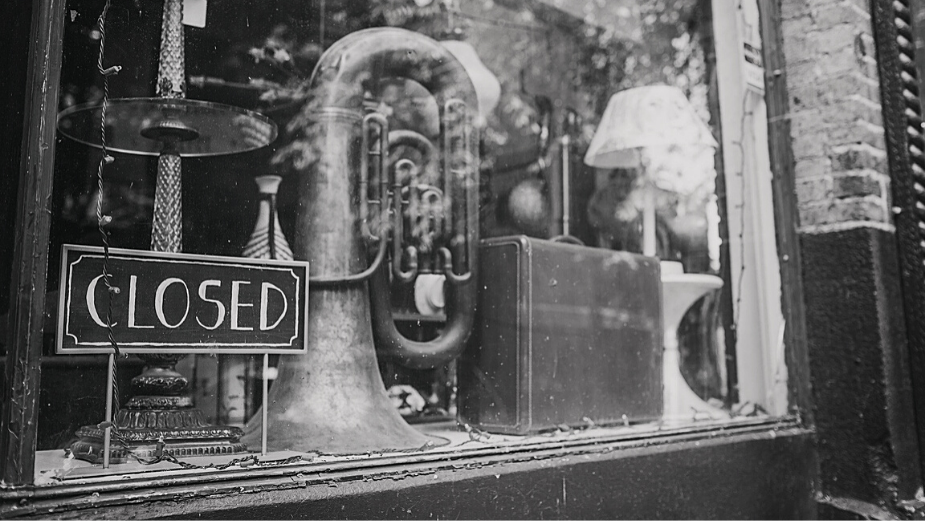
After the Pandemic, It’s High Time to Revive the High Street

It can take a crisis to see a long-term trend. So it is with the high street. Like a frog in an Amazon Basics pot of warming water, the nation’s recent covid lurch online has cranked up the heat sufficiently sharply for us to realise it’s in trouble. Last year, online share of retail sales shot up from 19% in February to 36% in November. A lot of those sales are never coming back to the high street and online competition is only going to get stronger. With all that in mind, it’s time we did a bit of soul searching about the high street…
Looked at from a ‘free market’ perspective, this is just another period of creative corporate destruction. You can no longer pile it high and sell it cheap when Amazon is a click away. You can’t compete on convenience with a frictionless sales transaction at any time of the day or night on your mobile. By this logic, the high street needs to focus on its strengths to compete.
So, what might high street 2.0 look like? Experience is one strength. Stores’ physicality offers the opportunity to provide the kind of Nike and Apple ‘multi-sensory brand theatre’ that can’t be replicated online. Late night shopping and in-store events can turn shopping trips into cultural or entertainment experiences with wine tastings, book readings, classes, spa experiences, etc…
People are a second strength. Local people who know their local community and can curate stock to deliver the brand promise tailored to local tastes; people who can offer the personal touch; managers who are more 'brand landlord' than 'accountant'; and people who offer service beyond the product be it inspiration, advice, fitting, ongoing servicing or whatever.
Custodians of the Community
This ‘high touch’ high street makes sense in terms of securing an ownable retail role, but high touch comes at a high cost. It requires investment in the retail environment to deliver a genuinely branded experience. It requires investment in staff to be brand ambassadors and relationship managers rather than shelf-stackers. All of this begs the question: ‘Where is the money going to come from?’
Which brings me to the ‘community’ perspective on the high street. We recognise farmers aren't just business people, but also 'custodians of the land' and we provide tax incentives to incentivise care of the countryside. Similarly, we need to recognise that high street businesses are more than just commercial enterprises, they’re also 'custodians of our community' giving communities identity, congregation and a sense of bustle and purpose. And likewise, we need to give the high street support to ensure it can continue to play this vital role.
Tax is the big issue. The high street gets regularly whacked by corporate tax and high business rates. Multi-national online competitors, by comparison, get off lightly. In 2019 Amazon got away with paying £293m tax on UK sales of £13.73bn at a rate of 2.1%. It's a double whammy - high taxes and unfairly under-taxed competition. Ongoing calls to rebalance the burden have got nowhere, but the tectonic plates may be shifting. If there's one silver lining to the phenomenal debts we've incurred in the pandemic, it's that to pay it back we'll have to rethink how we tax. Nothing walks the "we're all in this together" talk like splitting the bill.
Local government’s attitude to the high street is also critical. Lockdown has dealt a terminal blow to many high street businesses. This means there’s going to be a lot of empty retail space and how we fill it will shape the character of our civic space for years to come. Local government needs a long-term plan that looks to strengthen entrepreneurialism and community rather than just fill the immediate revenue hole. This means prioritising space for things like pop ups, independent boutiques, cultural spaces and start up incubators rather than simply more estate agents and phone shops.
At 2050, we believe in the high street. I saw Brixton's rise from troubled 80s to creative cool 90s driven in part by the redevelopment of Coldharbour Lane. By encouraging community-minded entrepreneurs to open bars, shops, cafes and restaurants, Coldharbour Lane evolved a new street culture who's creative energy set a new tone for the area. Our recent ‘Signs For The Times’ campaign created bespoke ‘open’ signs with positive community messages for independent shops in London’s Columbia Road. The aim being to encourage customers to appreciate the vital role of the high street and support their local businesses by lobbying MPs for lower business rates.
If there’s a silver lining to the pandemic’s impact on the high street, it’s that covid has also reawakened our sense of community and reminded us of its importance to us all. So, I hope we not only see the challenges the high street faces, but also have the community motivation and political will to build back better.













